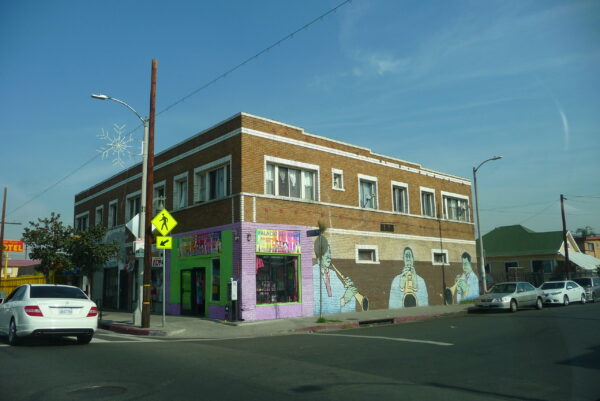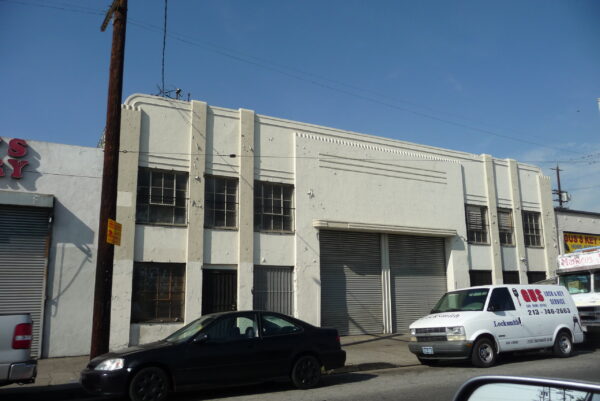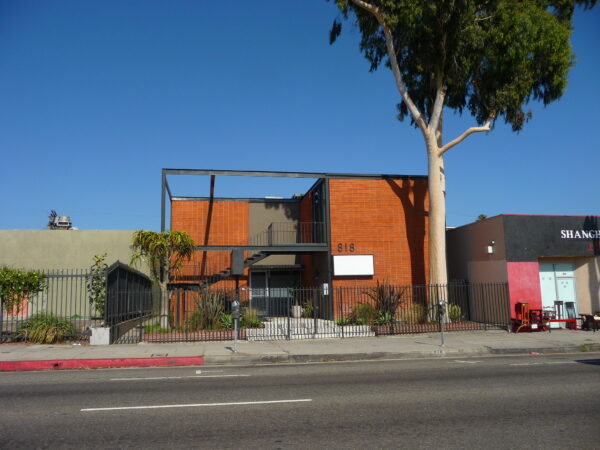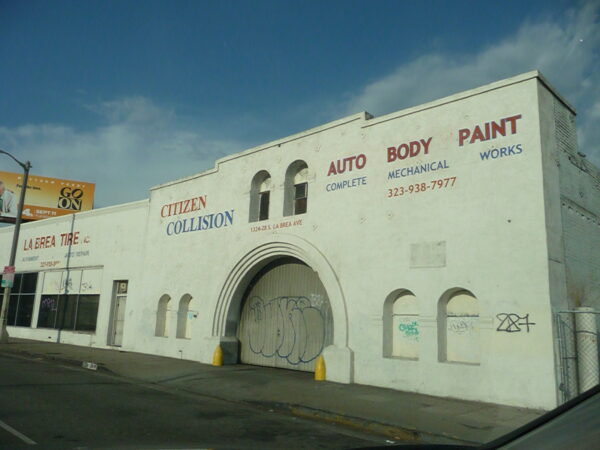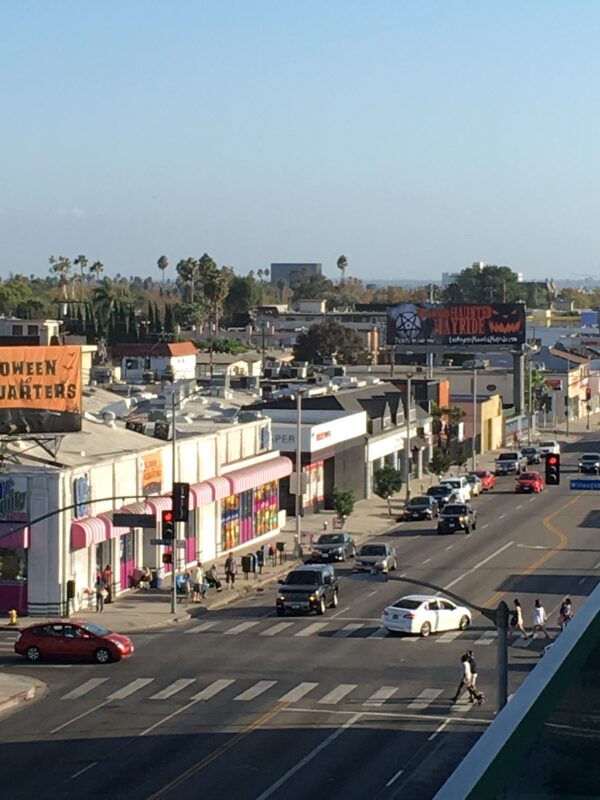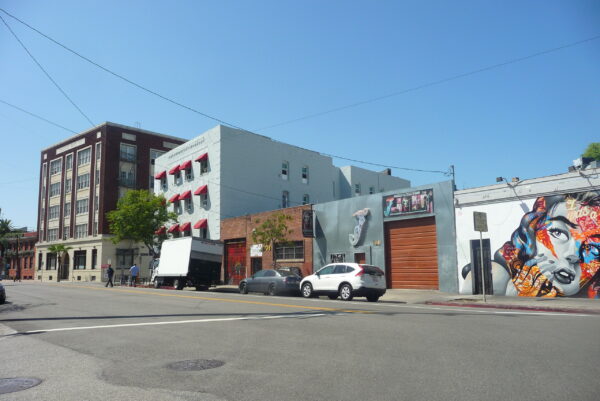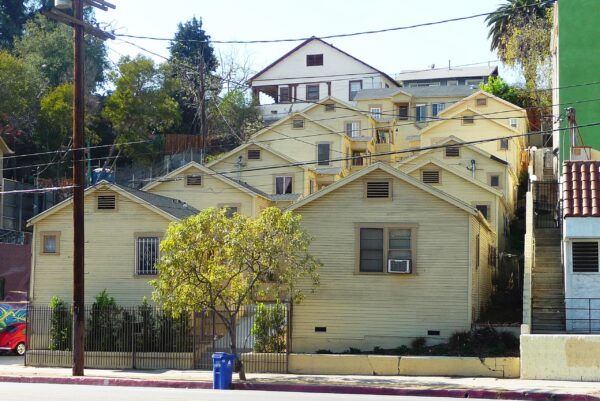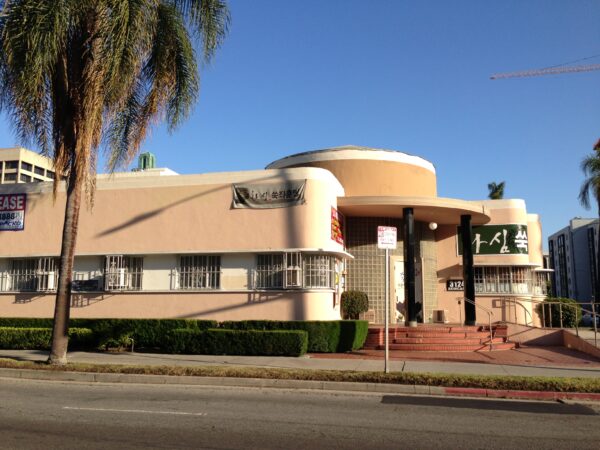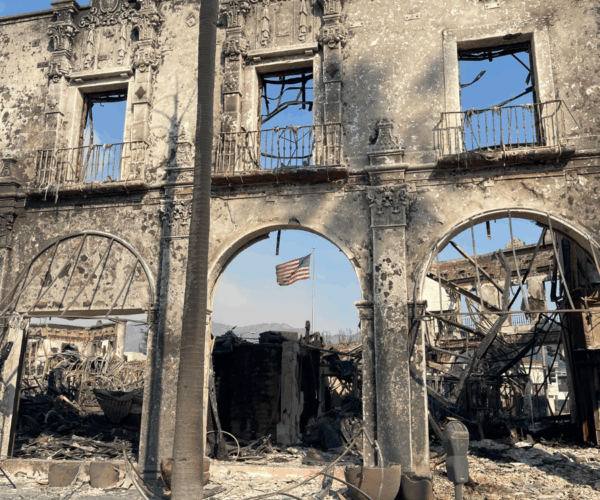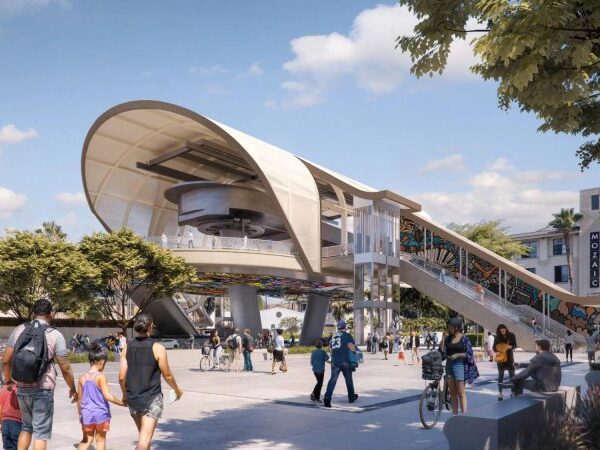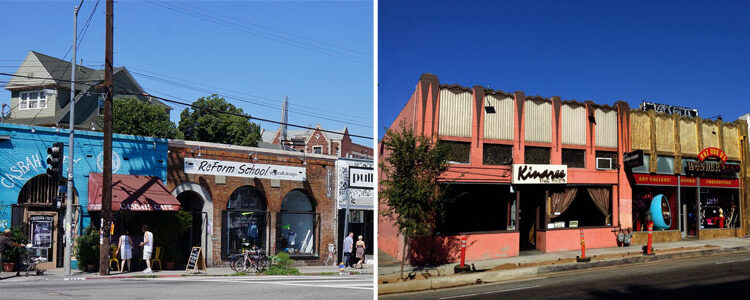
Active
Background Buildings
Active
Stay informed on active issues throughout L.A. County.
Overview
If you’ve noticed a negative change in your local commercial area but can’t put your finger on the source, it could be the rapid disappearance of what we call “background buildings.”
Background buildings are collections of modest, small-scale, yet distinctive structures that create the overall feel of a street or neighborhood. They may not be individually significant, but, collectively, they help define the character of a community.
One by one—or block by block—background buildings are being replaced with mid-rise developments that can seem sterile and disconnected from the existing community context.
Through SurveyLA, the City of Los Angeles’ comprehensive citywide historic resources survey, dozens of clustered background buildings have been identified and categorized as Planning Districts. While Planning Districts encompass a broad range of building types, they often feature commercial corridors that are familiar to many Angelenos, including Sunset Junction in Silver Lake and Ventura Boulevard in Studio City.
Like much of L.A.’s low-rise building stock, background buildings are increasingly vulnerable to development pressures and other market forces. Corridors like La Brea Avenue, particularly from Hollywood to Mid-Wilshire, are rapidly losing their distinct flavor as new intrusions emerge on the block.
Though the Conservancy does not oppose new density, particularly in transit and employment centers, we recognize the need for new tools to incentivize sensitive infill, thoughtful urban design, and the conservation of small, yet special buildings.
About This Issue
Our Position
The Conservancy is working to spotlight background buildings through a historic preservation sub-committee of the Zoning Advisory Committee for re:code LA, the multi-year effort to rewrite the City’s outdated zoning code.
Where and how to place density is more art that science. Instead of the blunt instrument of massive razing and redevelopment, we need a more surgical approach that integrates new development into an existing context.
Given the range of planning initiatives currently underway, from re:code LA to the New Community Plans program, the time is right to think creatively about our existing building stock and the need for sensitive infill.
The City has a clear opportunity to introduce a variety of new tools to help relieve development pressures from these smaller buildings that help anchor our communities, including Transfer of Development Rights/Transfer of Floor Area Rights and Conservation Districts.
We will also continue to press for further study of the SurveyLA-identified planning districts, which contain rich collections of older, idiosyncratic buildings.
